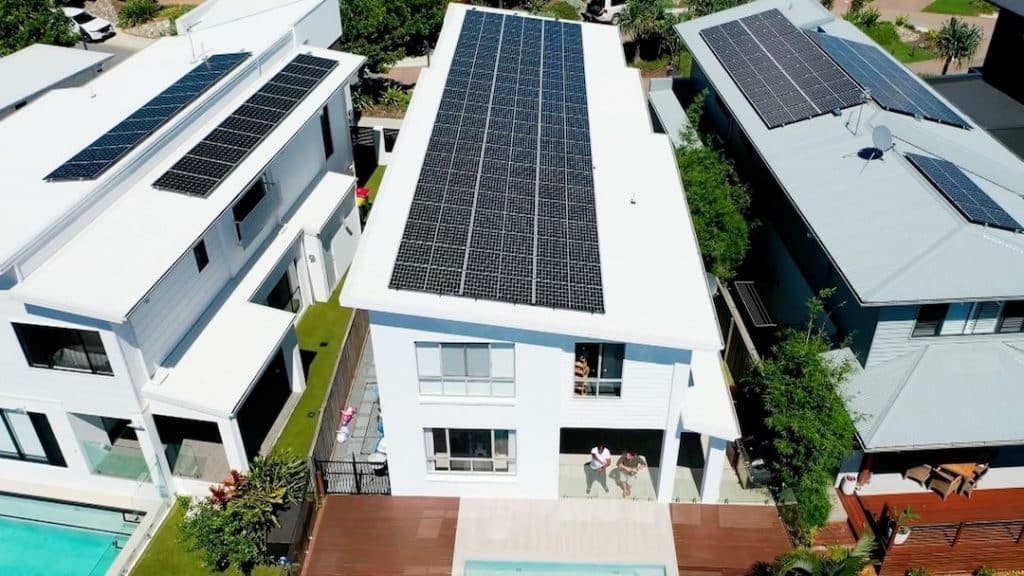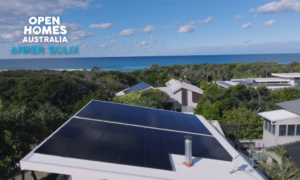Last year we published an article asking whether 8-10kW solar PV systems will become the new solar “sweet spot” for Aussie homeowners. We’re not quite there yet, but if the latest data is anything to go by, we are certainly heading in that direction.
In December 2021, the average size of a small-scale (<100kW) solar system installed on Australian rooftops (residential and commercial combined) increased to 9.5kW, up from 8.86kW in December 2020. While this increase is due partly to an influx of commercial installations in the 75-100kW range, there are signs the residential market is leaning towards larger system capacities.

Solar system size trends over time
When solar entered the mainstream Australian market, systems were considerably smaller than they are today. In January 2012, the average size for residential and small businesses was 2.65kW. This figure had grown to 4.47kW by January 2014 and has increased steadily year on year. It’s important to note that average system capacity often fluctuates seasonally, with smaller capacities in the earlier months of the year, gradually increasing as the year progresses and peaking in December.
Despite the overall increase in small-scale system capacity, the residential market has hovered between the 5-7kW mark for quite a few years now. Typically a 5kW-7kW solar system can produce enough energy for a household to run during the day and reduce electricity bills enough to see a fast return on investment.
The average system size being advertised for homeowners today is still around the mid-6kW mark, but several factors are driving the general trend for bigger systems, including the uptake of battery storage, electric vehicles and a push towards greater energy independence from the grid.
The trend for larger systems is also a reflection of changing consumer attitudes and behaviours when it comes to solar PV. Australians are becoming more comfortable with the idea of generating, storing and using their own energy.
Is bigger better?
It’s worth noting that while the average system size is increasing, this doesn’t mean every household is going bigger. In fact, not everyone can accommodate larger capacity systems due to limited roof space.
The reality is, not every household needs to go bigger than the standard 5-7kW, especially if their current and foreseeable future energy needs are low to average. But for those who can and want to go bigger, there are indications that a larger system could provide better returns in the long run and future-proof a household’s energy needs.

Considerations when sizing your system
A key consideration of sizing should be about maximising value – and maximising the value you get out of your system is largely about solar self-consumption. If you want to oversize your system simply because you want to make a return from the energy you send back to the grid, it isn’t going to be worth your while. Feed-in tariffs simply aren’t what they used to be.
Ideally, you will want to size your system to allow for your current and expected future energy consumption.
Modern solar panels last quite a long time – around 25-30 years – so if you think your energy needs are likely to change in this time (you’re getting a pool or an electric vehicle for example), it’s worth considering an oversized system that can accommodate these energy-intensive features.
Another very important consideration is battery storage. An increasing percentage of Australians are opting to add a battery when purchasing a solar system. In fact, in Sydney last year, 27% of new systems were installed with a battery.
Batteries allow you to store the excess solar energy your system produces during the daytime for use at night or during blackouts, and can significantly reduce your reliance on the grid. The larger your system capacity, the more self-generated electricity you’ll have available to store and use to power your home or charge your EV at night.

The bottom line…
Deciding on the correct size system can be difficult and it usually depends on a variety of factors unique to each household. With the inevitable march towards the adoption of renewable technologies like electric vehicles and battery storage systems in our homes, our advice would be to put on as big a system as you can reasonably afford right now. There’s always the option of adding capacity down the line.
If you’d like to get an idea of what size might be right for you, our free solar and battery storage calculator can generate an estimate of your system size and potential savings.
If you’re unsure, it’s always best to speak with a solar installer in Melbourne who can help assess your energy needs and provide advice on the best system size for you.
Assisting over 30,000 Australians in their transition to clean energy, Energy Matters can guide you toward a solar and/or battery storage solution that fits your lifestyle and budget. Receive up to 3, obligation-free solar quotes from our trusted network of accredited solar installers in Melbourne. It’s fast, free, and takes the hassle out of shopping around.













































